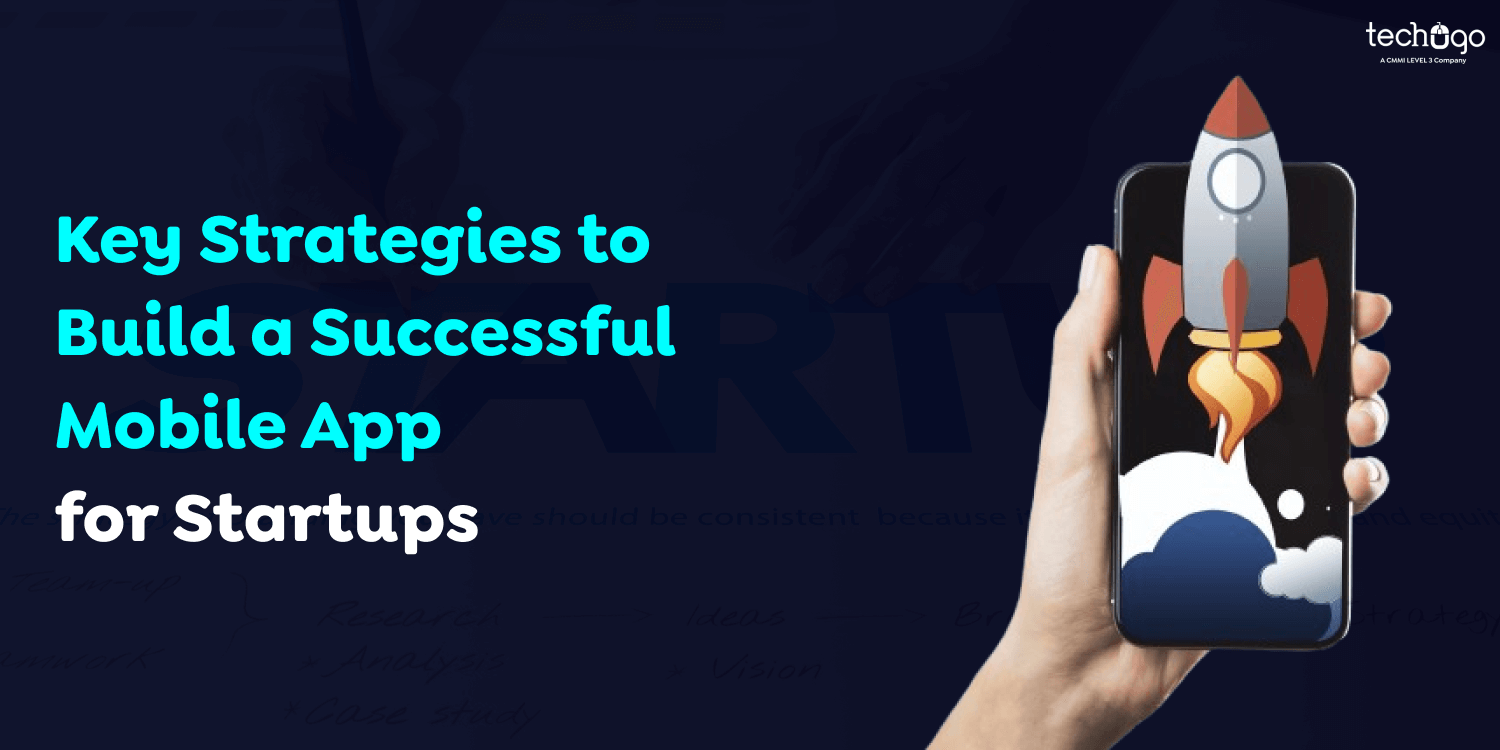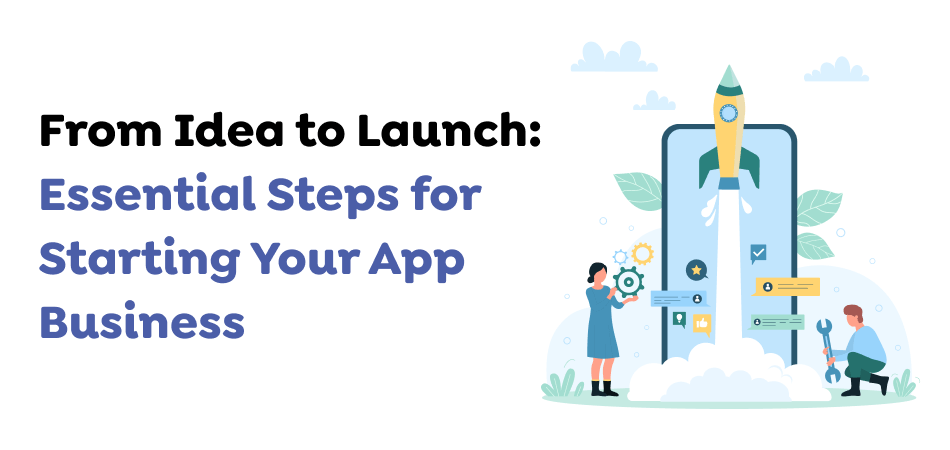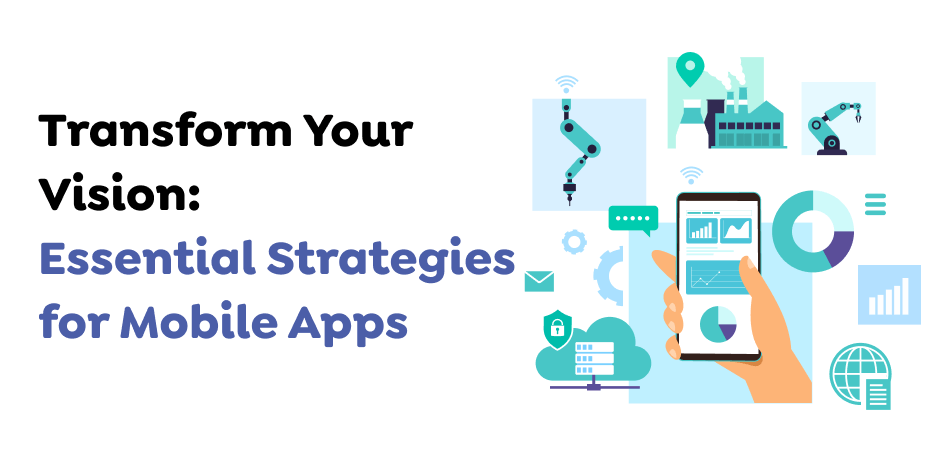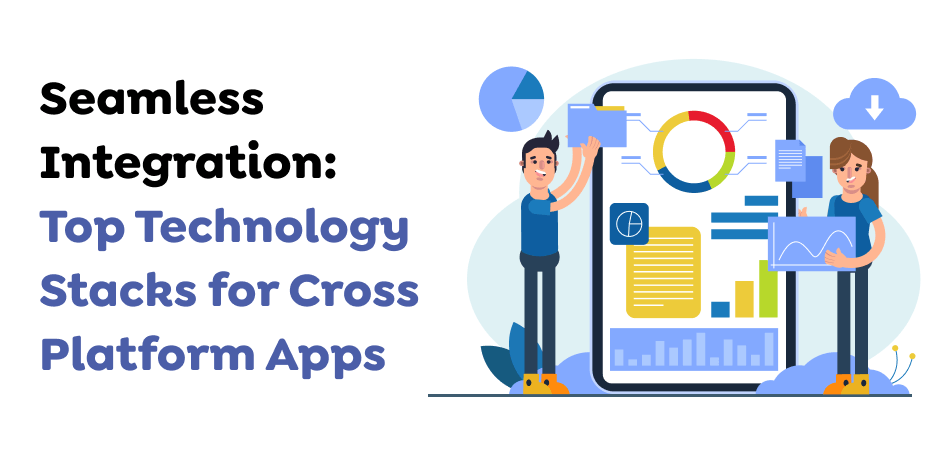19 Sep 2024
Updated on January 30th, 2025
Key Strategies to Build a Successful Mobile App for Startups
Matthew Connor

From small-business apps to e-commerce applications for fitness, communication apps, religion apps, and much more, there’s an app for any application you can imagine. Apps can be created as a complement to your existing business or to establish a new company entirely from the ground up.
This guide is for anyone who wants to develop a mobile app, whether for their company or to create the next unicorn. Learn how mobile apps for startups can drive innovation and success in today’s competitive market.
The first-time developers for non-technical users and anyone who’s had the failure of a development project previously. This guide will take you through the creation process in a way anyone can comprehend.
Insightful Overview Of Development Of Mobile Apps In 2024

Progressive web applications (PWAs) deliver speedy load times, offline functions with push notifications, and an app-like experience that combines the advantages of native apps and online applications. PWAs utilize a URL on a website rather than app stores. Apps are now beginning to integrate chatbots and interfaces, allowing smooth and user-friendly interactions. Chatbots can respond to FAQs and perform simple tasks that can help users instantly.
- Many apps utilize beacon technologies and geofencing capabilities to trigger location-based notifications and other activities. This can improve user experiences, promotions, and personalization.
- More apps use artificial intelligence and augmented reality to create immersive experiences, automatically make suggestions, and improve efficiency.
- More applications use artificial intelligence and augmented reality to create immersive experiences, automatically make suggestions, and streamline processes.
- With a growing number of apps that incorporate payment gateways and transaction capabilities, mobile commerce and payment are experiencing an increase. Consumers are now able to complete transactions in apps.
Technological advancements have made creating apps more complex, requiring an array of abilities from an Android app development company in Canada that deals with chatbots, AI, AR commerce, mobile experiences, and monetization.
Also Read : Transform Your Business with a Mobile App: Discover How We Bring Your Ideas to Life
Step-by-Step Guide to Starting an App Business

The process of developing an app could be simpler. But launching a successful company for apps isn’t. Let’s look into every step involved in creating an app-based business, from idea validation to gathering customer feedback to testing innovative concepts.
Find Out More About and Validate your App’s Idea
Conducting an extensive market study is the first step in creating mobile apps for startups. This research of high quality in this stage will build the foundation for the successful development of your mobile app.
Ensure you include a thorough review of the following to come up with an original and innovative solution for your target audience:
- Your target audience: Determine your target users and then analyze their needs for the current solutions. Analyze the market size of your solution and identify the potential market for your solution (TAM ).
- Competitors: Find possible competitors and analyze their market position. Examine their mobile apps’ weaknesses and determine how your solution could fill the gap.
- Analysis of failed applications: Do more than choose the most successful application to conduct your study. Examine failed applications to look at their mistakes to avoid making the same mistakes you make in your application.
At this point, you’ll also be working to validate your mobile application concept. This study aims to ensure you tackle the real issue that needs an answer.
Instead of jumping into the first concept, it’s more beneficial to think about, research, and finally come up with the idea of an app that you believe is superior to all the other ideas. Make sure you give each idea a fair chance before discarding it completely.
Find a product market suitable for the idea you have validated, then rework areas needing improvement.
Think of a Mobile App Name
Before you move on to more complex parts and begin developing, make sure you have a name for your mobile app. Finding the correct name is a problem in itself.
You can create an app with an identical name if you already operate an established business. This will make it easier for your current customers to locate your business.
But, if you’re launching a brand new company, there are a few ideas that will assist you in deciding on the ideal brand name to promote your application development business:
- Think of the keywords that best reflect your company’s offerings. For instance, if you are launching a new app in the fitness and health sector and launching an app for fitness, make sure to include the relevant keywords in your app’s name.
- Select a simple name that is easy to remember and easy to spell.
- Select a shorter name. Each app store has character limits. Therefore, it is better to brainstorm concepts within that area.
- Do not use heavy jargon or terms in the name.
- Make use of name generators online, as well as financing and suggestions.
- Request suggestions from creative people within your circle of friends when creating a unique name.
Ultimately, consider your brand’s values and select a name that expresses these values.
Also, ensure you have a unique name readily available to register. If you intend to register your business under another name, you must finalize it, too.
Create an App Business Plan
From determining a business plan to carrying out app development, from financing before launching the application and promoting it, everything is to be planned, implemented, and monitored when launching your own application.
The creation of a mobile application business plan is a sure way to know the market well and ensure that every step is mapped out to withstand the shifting conditions of the mobile app business.
Additionally, if you want to raise funds for your mobile app, having a well-designed strategy will give you an advantage over other mobile app developers.
Do you need help deciding what to include in an effective app plan? Here are the top parts your business plan must include:
- Executive summary
- Business Overview
- Analysis of the mobile app market
- Mobile app services
- Sales and marketing strategy
- Operations plan
- Key management team
- Financial plan
Secure Seed Financing for your App’s for Business (Optional)
Now, you require funds for app development and other tasks to transform your concepts into realization.
Review your financial situation and see if you need additional money to fund the development of your mobile app. If yes, how much?
Try to get a loan from relatives and friends to alleviate the charges for repayments and high interest rates. But if this is not an option, consider the other funding sources and choose the most suitable option for your requirements.
Here are some choices to think about:
- Bank Loans
- Crowdfunding
- Angel Investors
- Venture Capitalist firms
- Credit card financing
If you plan to solicit funding from investors, you’ll need to pitch your business plan. They’ll supply investors with equity if they are willing to purchase a particular stake in your company.
But, you could begin small and then request funding from the outside when you grow the app.
Choosing a Mobile App Development Platform
The first step in app development starts by choosing the ideal platform for running your app on mobile devices. The majority of mobile apps for startups in the market utilize any of these three app processes to develop apps:
-
Native apps
Native applications are created to be compatible with specific operating systems and devices. They have access to the Native device’s API, which allows users to create powerful apps with a highly refined user interface.
The apps cost a lot to create since you require diverse outputs to run on different operating systems. They can, however, be found quickly by the users you want to target to download. For example, 80% of mobile traffic comes from Native mobile applications.
Do market research to understand the Apple Store and Play Store. Examine the number of Android and iOS apps and the revenue share and market positions of these platforms to make an informed decision.
For example, in 2023, there were over 1.8 million iOS apps and 3.6 million Android apps available on the Play Store and Apple Store, respectively.
Determine if your possible app users are using Android and Apple devices. You should also consider the compatibility of your native application with an operating system compatible with each.
-
PWA (progressive web apps)
PWA is a hybrid of mobile apps and web pages. It is a web application that provides users a quality experience similar to native applications.
The apps don’t require a download and are listed on search engines. They do not require access to native device APIs and are great for businesses that need regular updates.
It is easier to reach more users using PWA and iOS applications and relatively inexpensive to create.
However, since PWAs don’t utilize the device’s native APIs, they perform relatively poorly in terms of capabilities compared to native applications.
You can also consider the alternative of hybrid apps. An app builder can assist you in creating apps that are cross-platform and compatible with both platforms simultaneously by using similar code.
A successful app company launches both an Android application and an iOS version to cater to a broader audience.
Then, you can allocate the resources based on the method of development you decide to use.
Develop an App
Are you planning to create native apps? If so, are you contemplating developing an Android, iOS, or both?
After you have decided between native apps, PWA, and hybrid apps, it’s time to collect the necessary materials and begin working to develop the app.
Here are three ways to select the development method you prefer:
-
Create your application
This could be the most cost-effective development method, especially if you understand several programming languages, have previous experience building mobile apps for startups, and have some spare time.
Find a freelance app developer/ development agency or an internal group of developers for apps.
If you have no technical background, you need a large group of people who can create your app concepts.
This process is expensive. But, you will be able to be in complete control of the development of your product.
-
Use an app builder
Like CMS, similar to WordPress, an app builder allows you to create websites without writing just one piece of code. As the user experience of your application appears, the app builder constructs it in real time.
While you focus on the development process, ensure you also focus on providing the best user experience. Engage designers to help achieve a more modern and user-friendly experience.
It can take 6 to 10 months to develop your app idea into a success. Use this process for developing your app to provide a well-structured product:
- Develop a minimum viable product
- Develop a wireframe
- Choose your programming language
- Begin the Coding
- Work on app design
- Test the app
- Launch
Create a timetable for the launch and prepare the product.
Register your App Business
It’s time to register your mobile app as an official identity. You can register your company in these simple steps:
- Select a business entity
Business entities are the official form of your company. The structure you select for your business will determine the tax and liabilities and the regulations imposed by your state.
Here are some possible entities to select for your mobile app company:
- Sole proprietorship
- Partnership
- LLC (Limited Liability Company)
- Corporation
Each of these entities has advantages and disadvantages. After careful analysis, find the appropriate structure for your mobile app.
Corporations and LLCs are better for businesses because they keep you separate from your company and ensure you control your liability.
Also, think about the typical business structures you can use to raise funds from investors.
- Apply to register for business tax and EIN
In the meantime, quickly proceed to tax registration and obtain an Employer Identification Number (EIN) via the IRS website.
A 9-digit EIN is a type of social security number. It allows you to open bank accounts, apply for credit cards, complete tax forms, and even pay your employees.
After the registration is completed, you can obtain the necessary licenses and permits.
Apply for Permits and Business Licenses
Business licenses and permits guarantee that your mobile app’s business is legal and secure. Based on the type of app, its business, function, and location of operation, find the most essential permits required for your company.
Here are some of the licenses and permits you should get for the mobile app industry:
- Specific Licenses for Industry: Based on your business, i.e., gambling, healthcare, beauty, fashion, etc., obtain the necessary permits for that particular trade.
- Zoning Permit: If you are looking for a commercial location for your app, Get the required building permits. If you intend to operate your business from home, you should check if your state requires Zoning permits for businesses operating from home.
- License for Software Development: Depending on your status, you may need to obtain an official license for software development in order to begin development.
- Tax Permit for Sales: To sell digital and physical items, you might require authorization to pay the sales tax.
- Protection of Data Privacy and Data Protection: Since you are collecting sensitive information and personal data from users and customers, you must adhere to the data privacy regulations applicable to your business, for instance, GDPR, CCPA, etc.
Employ an expert to handle these issues. Failure to comply with any regulation could result in extremely severe penalties.
Get Business Insurance
Insurance is optional to ensure compliance. However, it will protect your company from potential losses and the risk of doing business.
Here are options for insurance that you should consider:
- General Liability Insurance: If there’s one insurance policy you should purchase, it’s this. It provides protection against injury to property, damage to property, and a myriad of commercial aspects that require coverage.
- Insurance for Additional Liability: If you provide services via your app, you should purchase this insurance. It protects you from allegations of professional negligence.
- Worker’s Compensation Insurance: Insurance for workers’ compensation for an app development company that plans to employ employees on a salary basis is mandatory to obtain this license. It’s a plan to cover your employees.
- Insurance for Cyber Liability: Since your business will operate in a digital space, obtaining authorization is necessary to protect your business from an attack on security or data leaks.
Be aware of your requirements and obtain specific insurance for mobile app businesses.
Apply for a Bank Account and Corporate Credit Cards.
Create a separate accounting system that keeps your personal and business expenses in a separate way. This will make it easy to keep track of your finances and file taxes.
With the EIN, open an account at a bank for business. Choose the right banking method to suit your company. Additionally, make an application for a business credit card.
Regular use of credit cards will help build your credit score and help you get loans in the near future.
Mobile App and Pre-Launch Marketing Strategy
The creation of a flawless app is not enough. It has to be elevated to the right people using the appropriate methods to gain the attention of downloads and downloads.
Get started on your marketing and branding strategy before launching your app on the App Store. The buzz and excitement you create during this phase can help when your app launches.
The following are key marketing aspects you must be aware of before launching your app in an app store.
- Define your branding components clearly. What type of image do you want to present in the marketplace? Design the app’s logo, design, colors, and the general user interface with branding in your head. Ensure you present a consistent brand image in all of your marketing channels.
- Determine where you will locate your ideal public. Are they more responsive to emails or social media? Would they instead read or videos? Are they available via offline channels?
- Create a landing page to advertise the application and its capabilities. A landing page with the proper strategic positioning can be a great asset in achieving the targeted reach.
- Connect with influential people in your field and work with them to promote your application.
- Create an online content bank that is reusable for multiple uses.
- Attend special events and seminars for your industry. Connect with your colleagues.
- Be generous with your advertising budget and then implement the app’s marketing strategy in the right direction.
- Don’t place all your eggs in one basket. Test different marketing strategies and eliminate those that aren’t effective as you observe and analyze the outcomes.
Develop a Monetization Plan.
Are you planning to earn money either directly or through your application? If so, begin preparing the best model for app monetization.
Here are some methods commonly used by other applications on the iOS App Store and Play Store.
- In-app purchase: In-app transactions are designed for businesses that want to sell digital or physical items through apps. They are essentially e-commerce apps that help you sell your items.
- Freemium: There are free apps available on the store. However, only certain content included in the apps is available for free. This method earns money when customers purchase paid content after downloading their free versions.
- Subscription: You earn weekly, monthly, quarterly, or even annual revenues by acquiring multiple subscriptions for your service.
- Paid Apps: These applications don’t have a free download. Users pay a fee to install them and gain access to their content.
- In-app ads: You can make money by renting ads for your application. However, this method should not compromise the user experience.
Each monetization model offers advantages and disadvantages. Consider the monetization methods your competitors employ or other applications providing similar services. Then, plan your strategies accordingly.
Create an Organization as you Expand.
Do not build a huge team at the start. It is best to start the design of your app developed by remote app developers or freelancers.
Based on whether you intend to launch your app for Google Play Store or the Apple Store, you must employ experts in the respective programming language.
Make sure you have a small but highly skilled team that is highly skilled. Work on tasks such as legalities, accounting, and marketing outsourcing.
App development can be expensive. To stay on top of the project’s progress, it is important to plan your entire development process daily.
App will be Available in the App Stores.
You’ve come a long way. From conducting market research for your app’s concept to creating MVP and constructing your app, you now have your app in place for launch.
You are now working on optimizing your app store to make your app searchable in app stores. The app market is extremely competitive. When you launch your app through the Apple app store or Google Play store, an optimized app is more likely to be seen organically.
Here are some aspects to take into consideration when optimizing your app store:
- App name: Optimize your unique app name within the character limit. For an app the character limitation for an iPhone application can be 50, whereas the limit for an Android app is 30 characters.
- Optimization of Keywords: Include relevant search terms to your application to ensure it is easily found.
- App icon: Add an identifiable and distinct icon in your app to allow it to be recalled.
- Description: Include a compelling description of your app, including its features and benefits. Use bullets, headers, and subheadings to make the information easily readable.
- Screenshots: Upload screenshots of your app’s design to let users know what to anticipate.
- Video: You can also add a video to your website application that clearly outlines its mission, message, and purpose to communicate to users.
Manage the optimization of your app store by understanding the needs of different platforms and making your apps available in the app store.
Release App Updates Promptly
The app should be launched immediately after your MVP is complete. Don’t wait for development to be completed to provide all the features. Concentrate on the most important features and include them in your MVP.
Test the app on early adopters and collect data on users’ performance across different mobile devices. This will provide valuable feedback from users as the app develops.
The launch of the app is still in progress in your app-building process. To remain ahead in the app market, you must release updates, address bugs, and conduct test-beta testing of new features.
Ideally, a mobile app development company in Canada should release updates every 3 or four months.
Also Read : Exploring the Rapid Growth of Augmented Reality Mobile Apps in Canada: A Vision for the Future
Key Strategies to Create a Mobile App Startup

Before we discuss writing a mobile-based app business plan, we’ll offer suggestions to aid you in building mobile apps for startups.
Purpose
Before working with Google Docs, ask yourself: What do you want to accomplish? The answer to this question determines your priorities. If, for instance, you’re planning to utilize your mobile app to raise funds, it’s essential to think about the reasons you’ll require the funds and the exact method you’ll use to use it.
Structure
It is vital to be able to read. It means that the content is likely to be complicated however, navigating it must be as simple as you can. The document should be organized in an organized arrangement, with one section that flows logically from one to the other and a clear format with headings, subheadings, and sufficient white space. You may also enhance your numbers by displaying graphs emphasizing the most essential points.
Take note not just of what the document says but also of how it appears: By using headings, subheadings, and diagrams, you will improve the structure of your document.
Fact-Based Estimates
The financial projections you make in the business plan for your mobile app must be realistic. Overly optimistic forecasts will be detrimental to your brand and cause a lack of confidence and distrust, not to mention that unrealistic expectations can damage the company.
In addition, the reports must clarify the company’s positive outlook and the benefits investors can expect should they decide to support the venture if the reports present an unfavorable picture, perhaps trying other ideas.
External Review
Making a formal 30-page document can be difficult, and there’s no reason you shouldn’t tackle the task in silence. It’s more effective when you don’t! When you’re done, ask other individuals (preferably skilled) to check it out regularly. This way, you’ll ensure your plan is rational and sensible.
Technology Stack for Cross-Platform Applications

Cross-platform development allows the creation of an application that can be used with multiple operating systems. We often suggest using this tech stack for app development because it’s flexible, time-saving, and affordable.
Cross-platform is the best option if you’re looking to build an app that can be universally used quickly. Additionally, the user experience and the security of this method are similar to native development, which means you can cut development costs and time by half.
The technologies we discuss below are suitable for emerging technology integration, like AI and blockchain, which have already helped many projects attract more customers.
Flutter
Flutter is a Google SDK created for:
- Android
- Google Fuchsia
- iOS and Mac
- Linux
- Windows
- Web development
By incorporating Flutter into your mobile technology stack for development, you can utilize one code to run on any platform. Flutter is also a good option for those who want to reduce the time it takes to market because the building process is quick and reliable and includes bug fixes and feature detection.
You can also hire a flutter app development company in Canada at a reasonable cost and have an aesthetically pleasing user interface for your next mobile app.
Xamarin
A Microsoft-developed platform provides native-like applications that are compatible with the following:
- Android
- iOS
- Windows
The framework uses .NET in addition to C#, with 96 percent of its code reusable. It supports both MVVM and MVC design and has a debugging-friendly interface.
React Native
React Native is a JavaScript framework that is used to design applications for
- Android
- iOS
- Web
- Universal Windows Platform (UWP)
Mobile apps for startups developed with the framework can work with native APIs, allowing developers to create unique mobile and web services capabilities. React Native is employed when a project requires a user-friendly interface and high-speed responsiveness.
The framework is supported by a massive community of users, which means the developers you hire will receive support. Scaling and improving your app in the future should be fine, which will improve performance and attract new customers.
Also Read : On-Demand App Solutions Revolutionized The Top 20 Industries
Conclusion
If you decide to use this previously mentioned mobile app development method, remember there isn’t a way to be 100% sure it is a good idea.
The whole thing comes down to your needs, budget, the kind of software you use, your industry, and many other factors.
If you are creating games or similar applications, opting for a native platform could be a good choice.
You’ll usually not need to use the cookie-cutter app, regardless of whether you’re developing an app for a hobby or for personal use.
The simplest way to build an app suitable for many companies that develop apps is to utilize a reliable platform for app development and stick to it.
Developing a great application is lengthy and complex; however, this doesn’t mean you shouldn’t try this path.
When the right team is in place to carry out these kinds of projects properly, they can produce spectacular results. A well-chosen development approach can particularly benefit mobile apps for startups.
Get in touch with Techugo today to start your journey towards innovation and excellence.
Get In touch
We are excited to here from you and let’s start something special Together. Call Us for any inquiry.
Write us
sales@techugo.caJust a call away
About you




